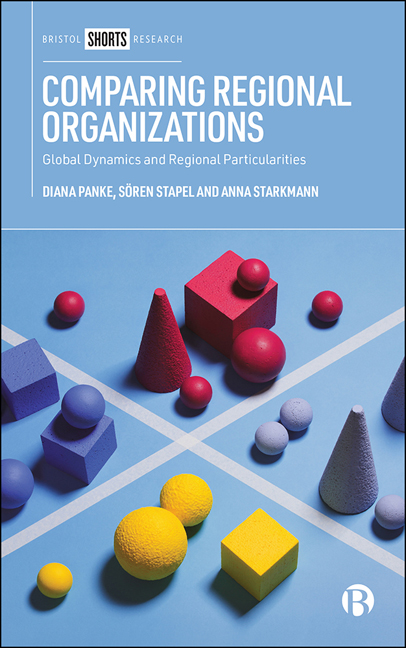Book contents
- Frontmatter
- Contents
- List of Figures and Tables
- Abbreviations
- Preface
- One Introduction
- Two Conceptual Framework and Measurement
- Three The Global Perspective
- Four Regional Organizations in Africa
- Five Regional Organizations in the Americas
- Six Regional Organizations in Asia
- Seven Regional Organizations in Europe
- Eight Conclusion
- Notes
- Appendix
- References
- Index
Seven - Regional Organizations in Europe
Published online by Cambridge University Press: 12 March 2021
- Frontmatter
- Contents
- List of Figures and Tables
- Abbreviations
- Preface
- One Introduction
- Two Conceptual Framework and Measurement
- Three The Global Perspective
- Four Regional Organizations in Africa
- Five Regional Organizations in the Americas
- Six Regional Organizations in Asia
- Seven Regional Organizations in Europe
- Eight Conclusion
- Notes
- Appendix
- References
- Index
Summary
European integration has received a lot of scholarly attention, but most often the focus is on a single RO – the EU (Lindberg, 1963; Schimmelfennig, 2016). However, there are very few comparative studies that shed light on all 16 European ROs, as organizations based on primary law, a headquarter office and/or a secretariat in which state membership is defined through geographic criteria and in which states cooperate with respect to more than one narrowly defined policy issue. Hence, this chapter adopts a comparative lens and uses the RO typology (see Chapter 2) to examine how European ROs have developed over time (1945– 2015).
The chapter first introduces the various ROs and studies their membership dynamics between 1945 and 2015. Second, the focus shifts to the scope of policy competencies acquired by ROs. After examining both dimensions of the RO typology separately, the chapter turns to a discussion of which types of RO can be found in European and how they have changed over time.
Although institutionalized cooperation in ROs started early in Europe, it is the region with the lowest overall number of ROs (16 in total). Over time, only one European RO was dissolved, while eight experienced losses in membership. At the same time, many European ROs are well equipped with policy competencies and half of them have encompassing policy scopes by 2015. With regard to the RO typology, it is remarkable that, initially, all ROs in Europe were selective in character in the 1940s and 1950s. In 2015, the picture has diversified: five ROs are small encompassing and small selective respectively, two are large selective and three are large encompassing.
Membership dynamics in European Ros
Between 1945 and 2015, 16 ROs were created in Europe and only one was disbanded (Table 7.1). The two oldest ROs are the CoE and NATO. Both had 12 founding states, but differed in purpose and objectives. The CoE was created by Belgium, Denmark, France, Greece, Ireland, Italy, Luxembourg, the Netherlands, Norway, Sweden, Turkey and the UK in order to promote social and economic development including human rights (Brummer, 2010; Kleinsorge, 2010).
- Type
- Chapter
- Information
- Comparing Regional OrganizationsGlobal Dynamics and Regional Particularities, pp. 101 - 118Publisher: Bristol University PressPrint publication year: 2020

